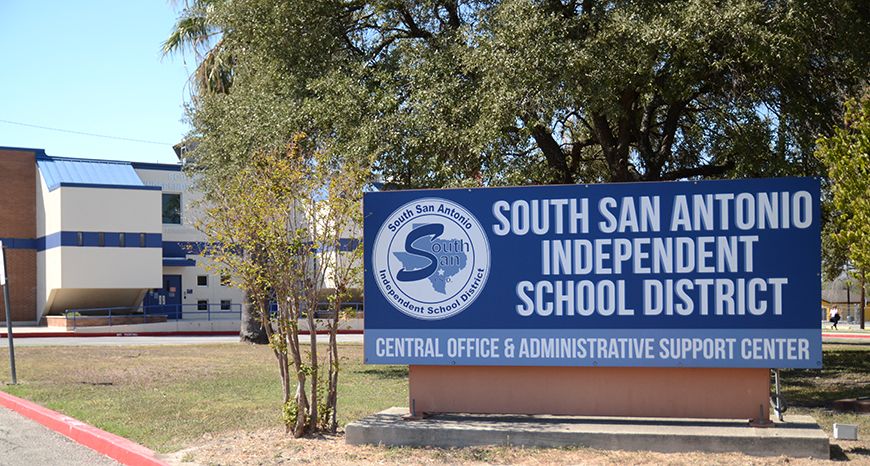SAISD Approves $541 Million Budget While Awaiting Final Word on State Funding
San Antonio Independent School District (SAISD) has approved a $541.1 million budget for the 2025–26 academic year, even as funding uncertainties and declining student enrollment continue to challenge long-term financial stability.
Trustees Approve New Budget with $46.6 Million Deficit
At a board meeting held on June 24, SAISD’s board of trustees adopted a $541.1 million general fund budget along with a $46.6 million deficit, marking a slight improvement from the previous year’s $51 million shortfall. Despite the deficit, district officials remain cautiously optimistic that state funding will help reduce the gap in the coming months.
Dottie Carreon, the district’s Chief Financial Officer, emphasized that the newly passed House Bill 2 (HB 2)—an $8.5 billion education funding bill—could significantly reshape the district’s financial outlook. However, since the Texas Education Agency is still finalizing implementation guidelines, the district has opted for a conservative approach.
“We’re continuing to budget conservatively,” Carreon said, noting that the district expects to amend the budget once more clarity is available from the state.
State Funding Expected, but Uncertainty Remains
SAISD estimates it will receive about $24.5 million from the state through HB 2. However, around $2.1 million will be immediately allocated to cover mandatory teacher raises outlined in the legislation, which prioritizes pay increases for classroom teachers with at least three years of experience.
That leaves the district with roughly $14 million in flexible state funding—resources that can be used to reduce the current deficit and address other discretionary needs.
Additionally, two other bills—Senate Bill 4 and Senate Bill 23—could limit revenue collection by increasing homestead exemptions for elderly and disabled residents. Both bills are contingent upon voter approval in November, creating further financial ambiguity for school districts across Texas.
Investing in Teachers and Staff Despite Budget Constraints
In April, SAISD approved a $14 million compensation package to raise wages for teachers, paraprofessionals, and auxiliary staff. The 2025–26 budget includes:
Raising starting teacher pay to $60,000
A 3% raise for teachers with one to two years of experience
Additional raises for other support positions
Although HB 2 covers part of these salary increases, the district will still fund raises for roles not included under the state's mandate. In total, $21.5 million will be spent on compensation increases for the 2025–26 school year.
Declining Enrollment Remains a Pressing Concern
While the district has experienced steady enrollment declines in recent years—prompting campus closures and consolidations—officials are cautiously projecting a modest increase of 100 students for the coming school year.
Newly elected trustee Mike Villarreal, a former state representative, raised concerns about the long-term implications of falling enrollment and inflation. He emphasized the need to address the root causes of the district’s structural deficit.
“The primary reason we’re in a structural deficit is because of our declining enrollment,” Villarreal said. “Declining enrollment undercuts all of our aspirational goals.”
Superintendent Jaime Aquino responded that the district prefers to overestimate enrollment rather than risk overcrowded classrooms and understaffing once school begins.
Increased Competition from Neighboring Districts
Trustees also discussed growing competition from neighboring districts, especially Northside Independent School District (NISD). NISD recently launched an open-enrollment initiative called “Excellence Without Boundaries,” which allows any student in the greater San Antonio area to apply for enrollment.
While SAISD offers its own school choice programs, officials are concerned about losing students—particularly those who live near shared boundaries between districts.
“It is incumbent upon us to figure out how to play in the sandbox where everybody is pretty much fighting for the same resources,” said trustee Alicia Sebastian.
Inflation and Cost Management
Rising inflation remains another challenge. Carreon explained that the district has accounted for variable inflation, including increased costs for pay, insurance, energy, and building materials. However, spending in other areas like school supplies and extracurricular activities has remained flat.
To reduce operational costs, SAISD has already implemented staff reductions, cut campus budgets, and streamlined central office operations as part of the current fiscal year’s cost-control measures.
Looking Ahead
Trustee Mike Villarreal urged the board to think more boldly about future budgets, recommending a shift in focus from mere cost-balancing to improving student outcomes.
“We need to reimagine the budget process to truly prioritize what matters most—our students,” Villarreal said.
As SAISD moves into the 2025–26 school year, district leaders remain committed to adjusting the budget as more state funding details are clarified, while balancing the dual pressures of declining enrollment and increasing competition in a changing educational landscape.
